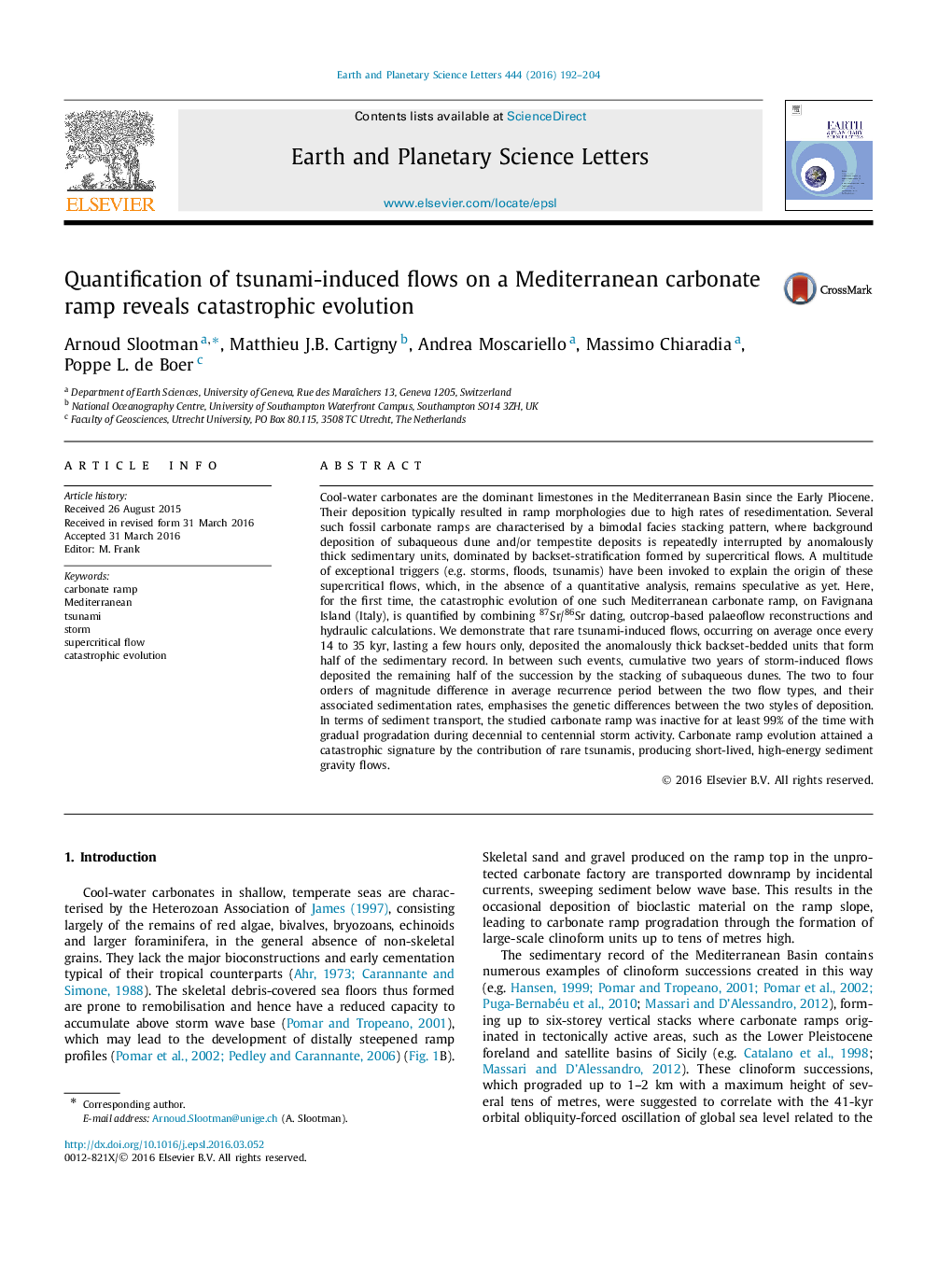| کد مقاله | کد نشریه | سال انتشار | مقاله انگلیسی | نسخه تمام متن |
|---|---|---|---|---|
| 6427503 | 1634712 | 2016 | 13 صفحه PDF | دانلود رایگان |
- First quantification of a catastrophic evolution of a Mediterranean carbonate ramp.
- Studied carbonate ramp was mechanically inactive during â¼99.99% of the time.
- Subaqueous dunes (50% sedimentary record) were active during â¼0.01% of the time.
- Rare tsunamis (50% sedimentary record) induced high-energy sediment gravity flows.
- Gravity flows were supercritical with breaking stationary waves and hydraulic jumps.
Cool-water carbonates are the dominant limestones in the Mediterranean Basin since the Early Pliocene. Their deposition typically resulted in ramp morphologies due to high rates of resedimentation. Several such fossil carbonate ramps are characterised by a bimodal facies stacking pattern, where background deposition of subaqueous dune and/or tempestite deposits is repeatedly interrupted by anomalously thick sedimentary units, dominated by backset-stratification formed by supercritical flows. A multitude of exceptional triggers (e.g. storms, floods, tsunamis) have been invoked to explain the origin of these supercritical flows, which, in the absence of a quantitative analysis, remains speculative as yet. Here, for the first time, the catastrophic evolution of one such Mediterranean carbonate ramp, on Favignana Island (Italy), is quantified by combining 87Sr/86Sr dating, outcrop-based palaeoflow reconstructions and hydraulic calculations. We demonstrate that rare tsunami-induced flows, occurring on average once every 14 to 35 kyr, lasting a few hours only, deposited the anomalously thick backset-bedded units that form half of the sedimentary record. In between such events, cumulative two years of storm-induced flows deposited the remaining half of the succession by the stacking of subaqueous dunes. The two to four orders of magnitude difference in average recurrence period between the two flow types, and their associated sedimentation rates, emphasises the genetic differences between the two styles of deposition. In terms of sediment transport, the studied carbonate ramp was inactive for at least 99% of the time with gradual progradation during decennial to centennial storm activity. Carbonate ramp evolution attained a catastrophic signature by the contribution of rare tsunamis, producing short-lived, high-energy sediment gravity flows.
Journal: Earth and Planetary Science Letters - Volume 444, 15 June 2016, Pages 192-204
